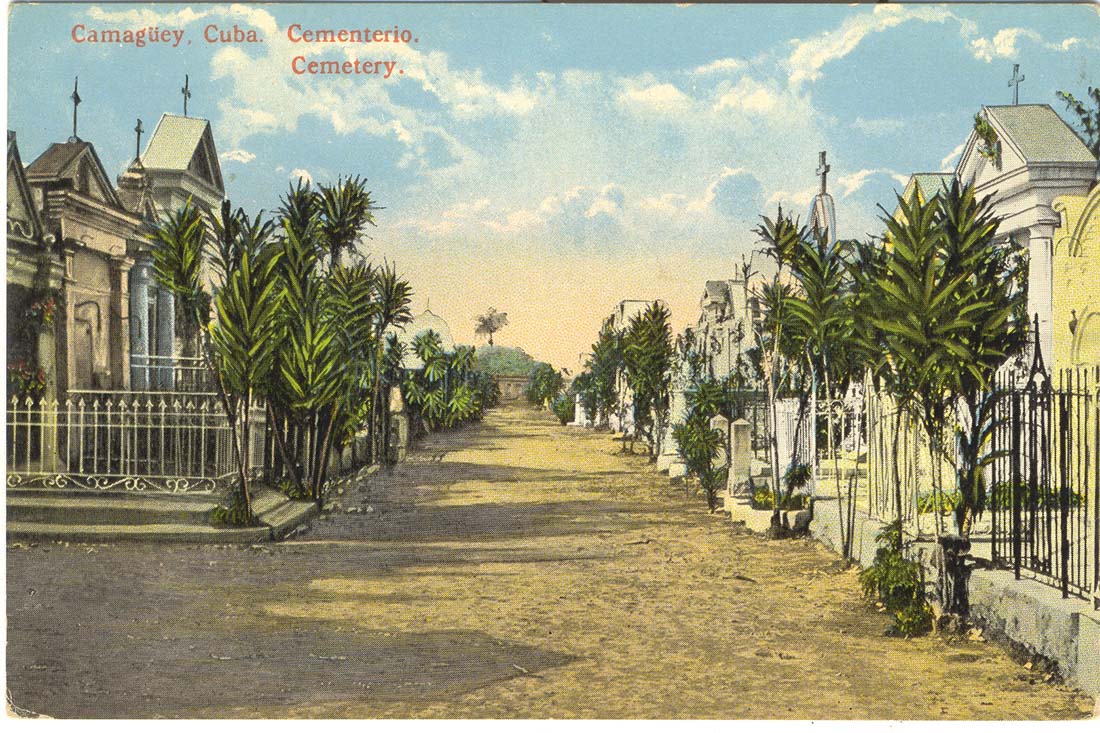The town of Puerto Príncipe gathered in its urban enclosure a dozen architectural buildings of great caliber built in the 18th century, among which there were almost the same number of churches in whose interior naves, under whose altars and in other places, their faithful were buried, which brought inconvenience and other problems for worship and other ecclesial activities.
It came to mean a discreet sign of “progress” favorable to hygiene. On land occupied by farmhouses of rustic houses, some planted with Chinese oranges, a pineapple grove, three royal palms, weeds, and a lagoon, this would be the space ceded by the regional council to build the city’s Campo Santo, which would have as its antecedent the small “cemetery of Santa Bárbara”, open behind the original hermitage erected to Santo Cristo del Buen Viaje, to the west of the town, in a space that would be surrounded by houses, retail establishments, a public square and narrow streets and dusty alleys that would facilitate the exit of the town in the direction of several scattered hanging houses and country houses for recreation and cultivation.
The Campo Santo would be expanded towards San Luis Beltrán Street, in 1839, due to the increase in deaths caused by cholera morbus. It would have another extension around 1862.
To date, several of its vaults and pantheons belonging to families of the Creole oligarchy were adorned with figures of funerary art made of white Carrara marble. No one desecrated the sacred precinct, despite the fact that in certain periods, due to the lack of funding, the General Cemetery would remain in a total state of neglect and lack of cleanliness and hygiene.
Some corpses were thrown at the door because the relatives of the deceased could not pay for the burial. Horses grazing on its overgrown grass, dogs prowling around corpses, open and smelly pits, among other anomalies seemed to have no solution by the religious administrator or the town hall.
The town, the cemetery and progress
The first five years of the 19th century would show the capacity of the inhabitants of Puerto Príncipe to undertake the material progress of the town. Opening of new elementary schools for boys and girls, refurbishment of archaic churches and convents, creation of the El Liceo society, creation of theaters, expansion of public spaces, construction or reconstruction of hundreds of houses, cobblestone streets and squares, expansion of maritime trade, increase in the network of roads between rural farms, proposal for the construction of the first railway, among other projects, clearly show the projections of the powerful Creole oligarchy of Puerto Príncipe, determined to equate the town with the capital and with other Caribbean towns.
The Camagüey cemetery would not be a silent, relegated and somber land just to go to mourn the deceased, left in pits or graves at the mercy of elements of their destruction and disappearance. Monuments, interior streets, gardens, Profundis Room, ironworks, marbles, pantheons, among other elements, had to be arranged to welcome all kinds of visitors who came to the sacred precinct even in times of pain.
The city, economic, material and general cultural progress should have proportionality. The title of city and other royal attributes conferred by the Spanish monarch Fernando Séptimo, in November 1817, made evident in the design of its ducal crown and the two silver globes that made up its coat of arms that regularity within the diversity of the regional ethnos.
It was true that Puerto Príncipe had very good buildings since the 18th century; several of its neighbors with coats of arms of nobility, such as the Marquises of Santa Lucía and Santa María, and the Count of Villamar; a region populated by very good herds of large cattle that were used to invest the money from their sales in new housing constructions in the city, such as the grandiose building of Regidor Lic. Tomás Pio Betancourt, authentic and very rich city oligarch of major brand.
And the General Cemetery could not be less than the city in identity, culture and heritage; health, hygiene, art samples, epitaphs, ease of access and decoration. In short, it would become the final resting place of the deceased, and a place for the eternal honors and evocations of the loved ones of the Legendary Camagüey.
Translated by: Aileen Álvarez García






